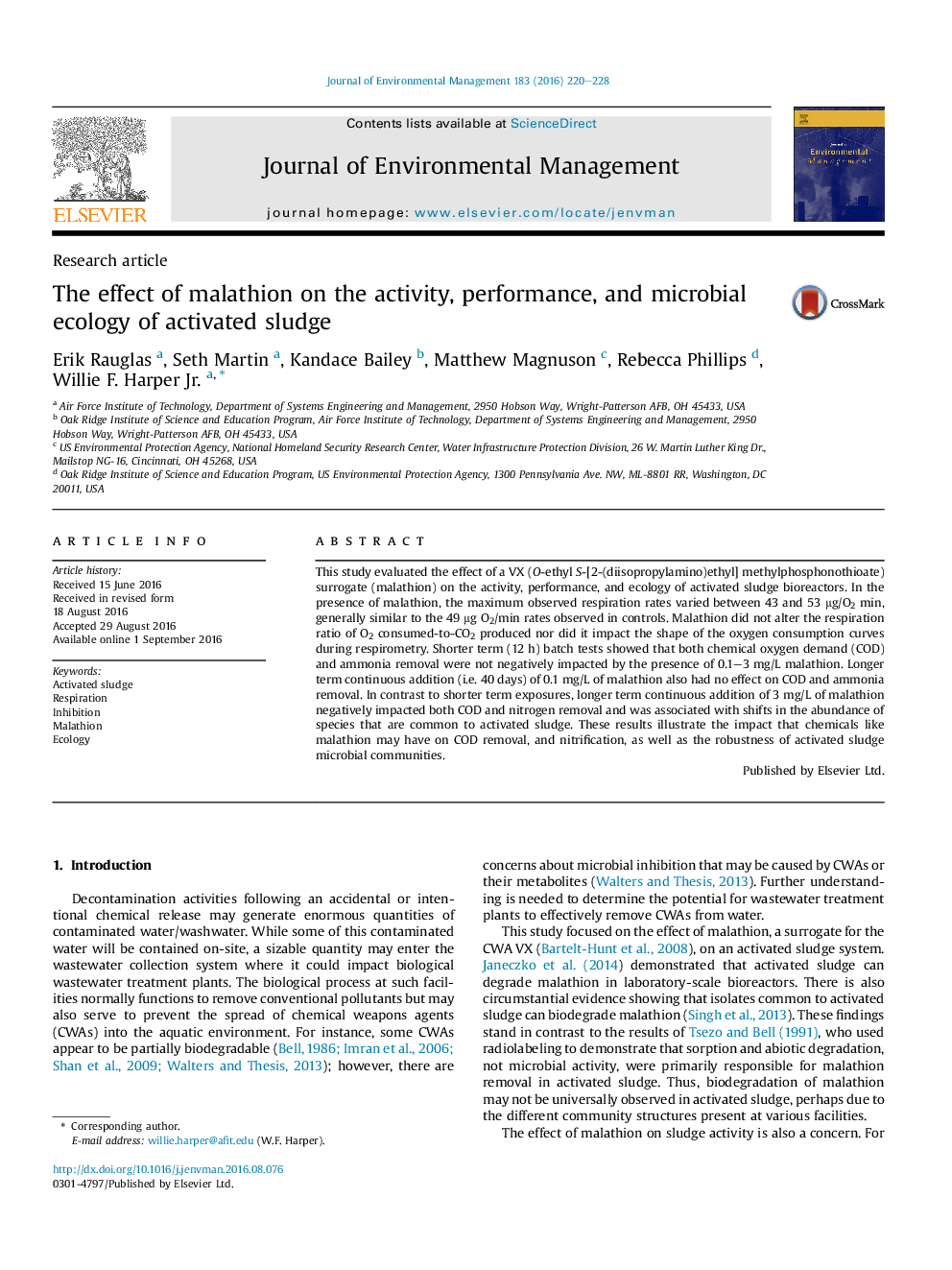| Article ID | Journal | Published Year | Pages | File Type |
|---|---|---|---|---|
| 5117306 | Journal of Environmental Management | 2016 | 9 Pages |
•Short term exposure to malathion did not stop respiration, COD removal, or nitrification.•Longer term exposure to malathion may cause ecological shifts and impact performance.•Malathion was biodegraded during activated sludge treatment.
This study evaluated the effect of a VX (O-ethyl S-[2-(diisopropylamino)ethyl] methylphosphonothioate) surrogate (malathion) on the activity, performance, and ecology of activated sludge bioreactors. In the presence of malathion, the maximum observed respiration rates varied between 43 and 53 μg/O2 min, generally similar to the 49 μg O2/min rates observed in controls. Malathion did not alter the respiration ratio of O2 consumed-to-CO2 produced nor did it impact the shape of the oxygen consumption curves during respirometry. Shorter term (12 h) batch tests showed that both chemical oxygen demand (COD) and ammonia removal were not negatively impacted by the presence of 0.1–3 mg/L malathion. Longer term continuous addition (i.e. 40 days) of 0.1 mg/L of malathion also had no effect on COD and ammonia removal. In contrast to shorter term exposures, longer term continuous addition of 3 mg/L of malathion negatively impacted both COD and nitrogen removal and was associated with shifts in the abundance of species that are common to activated sludge. These results illustrate the impact that chemicals like malathion may have on COD removal, and nitrification, as well as the robustness of activated sludge microbial communities.
